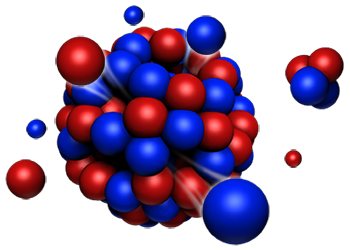Speaker
Description
Materials and Life Science Experimental Facility (MLF) at J-PARC generates pulsed muon and neutron beams by injecting highly intense proton beams supplied from accelerators through 3 GeV proton beam transport line (3NBT) into graphite and mercury targets. Then, it supplies the muon and neutron beams to user apparatuses in two experimental halls of MLF. For operating the targets stations safely and efficiently, a general control system (GCS) operates within MLF [1]. GCS administers operation processes and interlocks of many instruments for various statuses such as beam irradiation, target maintenance and emergency. Although GCS is an independent system that controls the target stations, it works closely with control systems of accelerators and other facilities in J-PARC. Since the first beam injection in 2008, it has operated stably without any serious troubles during a period of approximately ten years [2].
GCS has a data storage (DS) server storing operational data on status of target stations. It has functioned well to detect unusual situations around the target stations and investigate causes of trouble by checking data in the DS server. It also contributed significantly to investigate behavior and damage of the target stations when the Great East Japan Earthquake occurred in 2011 [3]. For the coming ten years, however, an introduction of abnormality sign determination system (ASDS) will be necessary for picking up potential abnormalities of the target stations caused by radiation damages, time-related deterioration and so on. ASDS is expected to judge potential abnormality on-line from slight state transitions of the target stations by utilizing algorithms based on analysis with various operational data during long-term operations. As one of key devices for developing ASDS, it requires an installation of integral data storage (IDS) server which can deal with various data integrally throughout proton beams, target stations, and secondary beams. Since 2019, we have produced the IDS server and tested its performance.
This report mentions a present status of GCS, a conceptual design of ASDS and an installation of the IDS server.
[1] K. Sakai et al., Nucl. Instr. Meth. A 600, 75 (2009)
[2] K. Sakai et al., JAEA-Conf. 2015-002 / KEK Proceedings 2015-7, pp.593-598 (2015)
[3] K. Sakai et al., Proc. of ICANS-XX, 2012, Conference proceedings ID 113 (2012)
http://www.neutronresearch.com/parch/2012/01/201201001130.pdf

